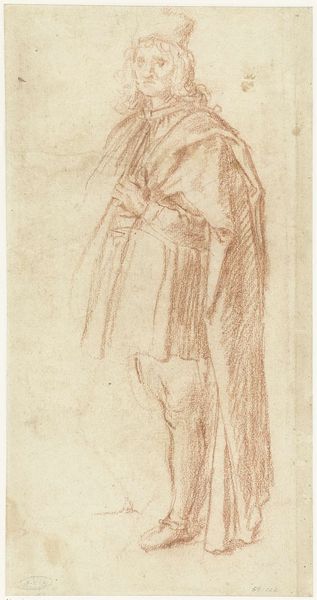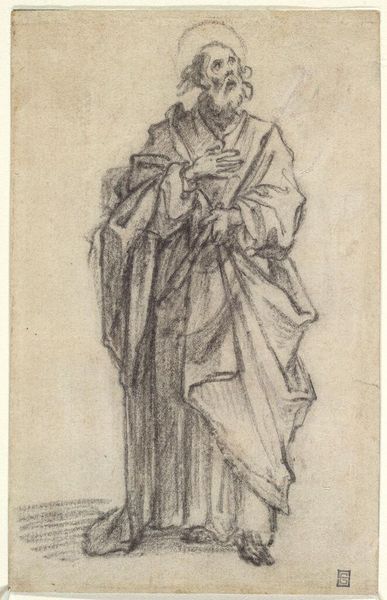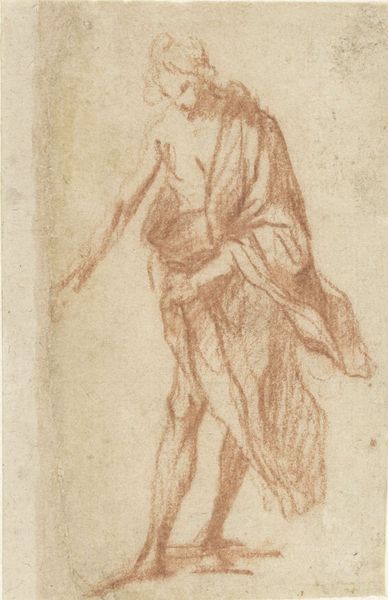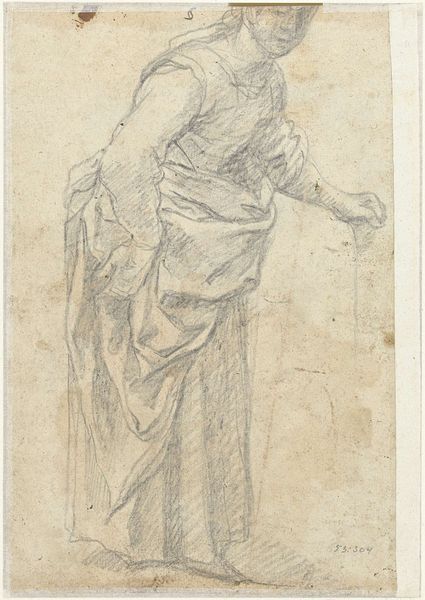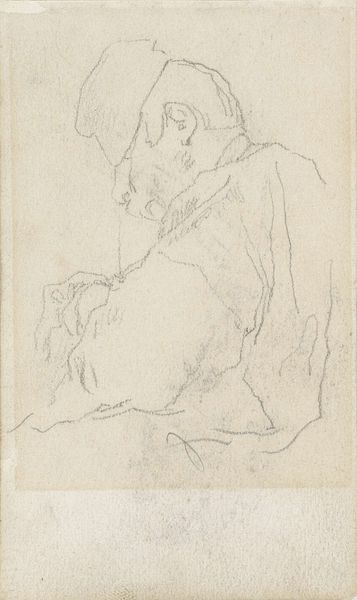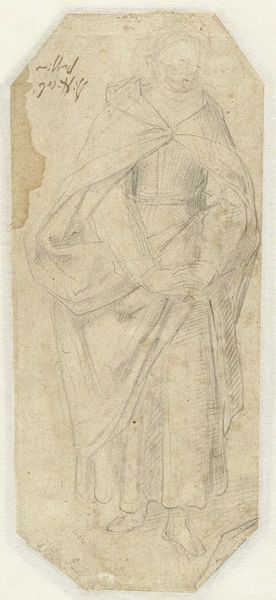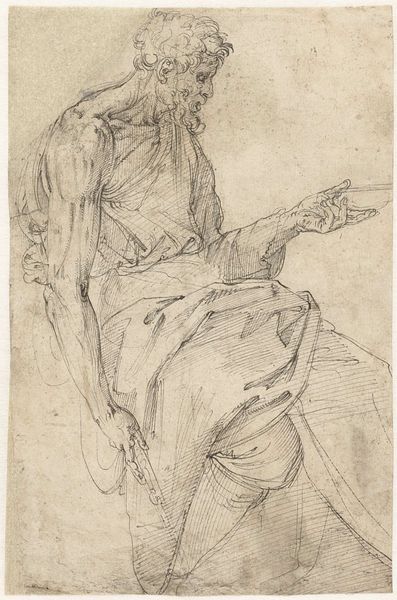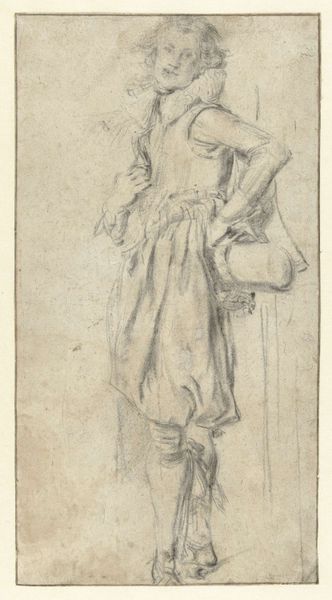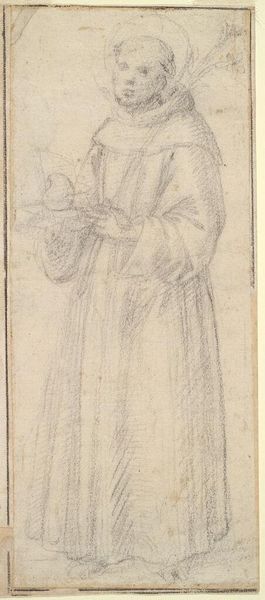
drawing, pencil
#
drawing
#
toned paper
#
light pencil work
#
pencil sketch
#
incomplete sketchy
#
figuration
#
11_renaissance
#
personal sketchbook
#
ink drawing experimentation
#
pen-ink sketch
#
pencil
#
sketchbook drawing
#
pencil work
#
history-painting
#
sketchbook art
Dimensions: height 240 mm, width 138 mm
Copyright: Rijks Museum: Open Domain
Aurelio Lomi made this sketch for a Christ in Gethsemane in the late 16th or early 17th century. It’s a preparatory drawing, so it gives us a glimpse into the artist’s process as well as a window onto the spiritual and political climate of its time. Lomi was working in Italy, during the Counter-Reformation, when the Catholic Church was reasserting its authority after the rise of Protestantism. Artists were encouraged to produce emotionally charged, accessible images that would reinforce religious doctrine. In this sketch, you can see Christ kneeling in prayer, his face turned upwards in agony. This would have resonated with viewers who were encouraged to identify with Christ's suffering and to reaffirm their faith. The sketch itself, with its dynamic lines and dramatic composition, reflects the influence of the Baroque style, which was emerging at the time. By studying Lomi's drawing alongside historical documents, religious texts, and the records of artistic institutions, we can better understand its place in the complex cultural landscape of Counter-Reformation Italy.
Comments
No comments
Be the first to comment and join the conversation on the ultimate creative platform.
